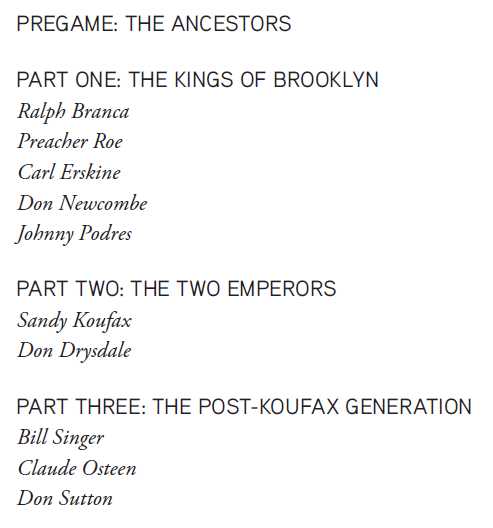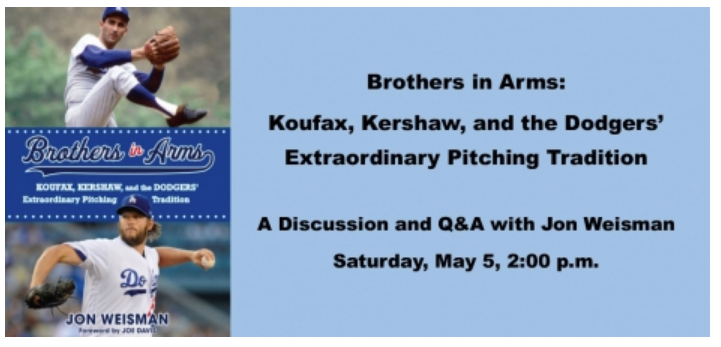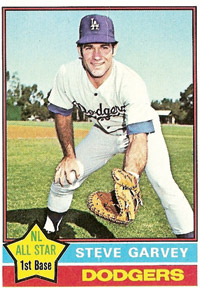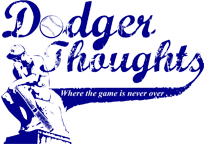
I can’t tell you how excited I am to share this news: Triumph Books has officially scheduled a May 1 publication date for my new book, Brothers in Arms: Koufax, Kershaw, and the Dodgers’ Extraordinary Pitching Tradition, and it’s ready and available for pre-order at sites including Amazon, Barnes & Noble and Triumph.
 To paraphrase a famous saying, everybody talks about the Dodger pitching tradition, but nobody’s ever written anything about it — not a book, anyway. So beginning while I was still working for the Dodgers, I did the interviews and research that ultimately led to this fascinating and comprehensive journey through the formation and flowering of that tradition, from its birth to its current heights in the form of a certain left-hander wearing No. 22 in Los Angeles.
To paraphrase a famous saying, everybody talks about the Dodger pitching tradition, but nobody’s ever written anything about it — not a book, anyway. So beginning while I was still working for the Dodgers, I did the interviews and research that ultimately led to this fascinating and comprehensive journey through the formation and flowering of that tradition, from its birth to its current heights in the form of a certain left-hander wearing No. 22 in Los Angeles.

Starting with the earliest days of baseball in Brooklyn, Brothers in Arms lays out how a scattershot franchise, occasionally and almost coincidentally graced by great hurlers, became a focused organization generating superb pitchers almost at will. Divided into nine parts (I was tempted to call them innings), the book takes a deep dive into the exploits of the most important pitchers to wear the Dodger uniform since the pitching tradition began to take hold near the end of World War II.
With each chapter, I tell the story of how each athlete came to be the type of pitcher (and personality) that he was and place their accomplishments into context, individually as well as in the pantheon of Dodger and baseball history. I wanted to bring to life those who pitched too long ago for contemporary fans to have seen, and provide new insight into those who are more familiar. To do so, I conducted more than 25 interviews with names from Carl Erskine to Clayton Kershaw, and worked my way through thousands of pages of books, periodicals and websites.
Each chapter became a portrait of a pitcher that stands on its own — you can feel free to jump around the 384-page book if you like — but also holds a specific place in the narrative of baseball and the Dodgers. In addition, several of the section introductions delve into less prominent but incredibly crucial contributors to the Dodger pitching tradition, including catchers, pitching coaches, managers, scouts and the front office.
While the Dodgers were rushing headlong toward the World Series in 2017, my free moments were largely spent diving into the past, working to tell the tale of Dodger pitching in the most meaningful way possible. I’m really grateful to those who spoke with me and helped me along the way, as well as Dodger announcer Joe Davis for writing the forward. I can barely wait for you to see the book, and am happy it will be out in time for Mothers’ Day and Fathers’ Day gifting, among other things. (However, I like to think it’s good for any occasion …)
Watch for more details to come, here at Dodger Thoughts, via my Twitter feed @jonweisman or on Instagram @dodgers_tradition. In the meantime, pre-order the book today!


















